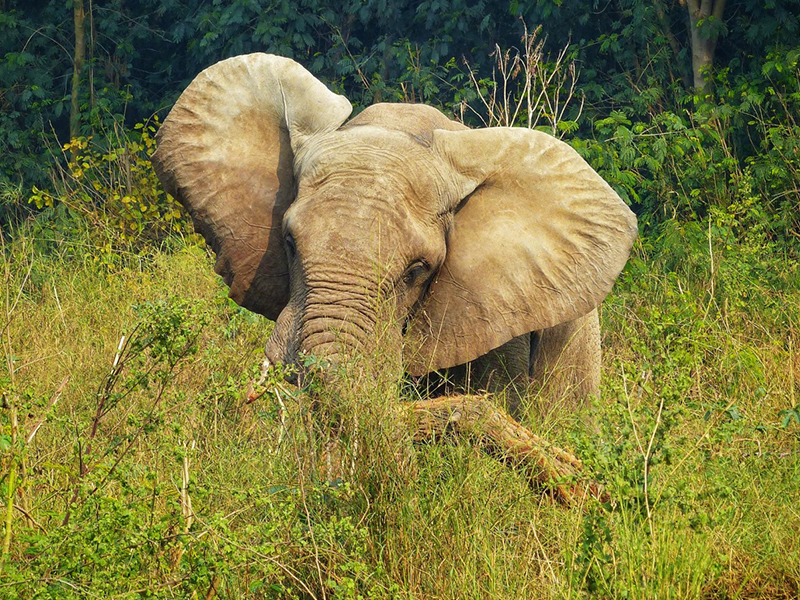We need butterflies because they are the bio-indicators and can sense the slightest alteration in an ecosystem. We should all come together and join hands to conserve these magnificent creatures.
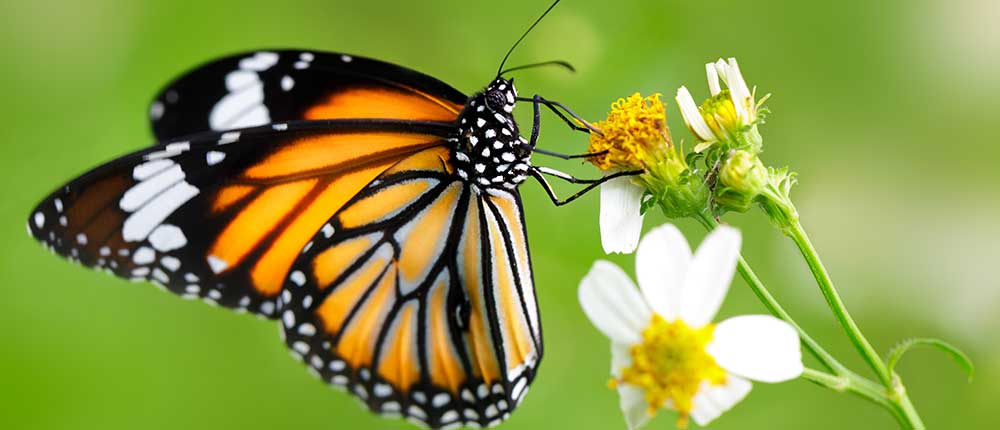
Butterflies are beautiful creations of nature that along with the moths, make up the insect order Lepidoptera. Butterflies are almost worldwide in their distribution and are highly sensitive indicators of the health of the environment and play vital roles in the food chain as well as being pollinators of plants. In this article, Dr Surya Prakash throws light on the brief history, behaviour and life cycle, and threats and conservation efforts to save butterflies. He feels that we should all come together and join hands to conserve these magnificent creatures. We need butterflies because they are the bio-indicators and can sense the slightest alteration in an ecosystem.
Butterflies are all around us, in almost every part of India except very high snow-clad mountains where the temperature is very low and below the freezing point where these tiny cold-blooded creatures cannot survive. We all have grown up watching butterflies and the next generation is also fortunate enough to do the same. I still remember how often after my school hours, I would slip into a park near my house along with my younger brother in Pali (Rajasthan) and spend my afternoon chasing and admiring butterflies. Butterflies have always impressed everyone and their reputation of being the 'Brand Ambassador of Insects' is apt because of their mesmerizing and adorable beauty. This also reminds me of something the American science fiction author, R H Heinlein, once said—'Butterflies are self-propelled flowers'.
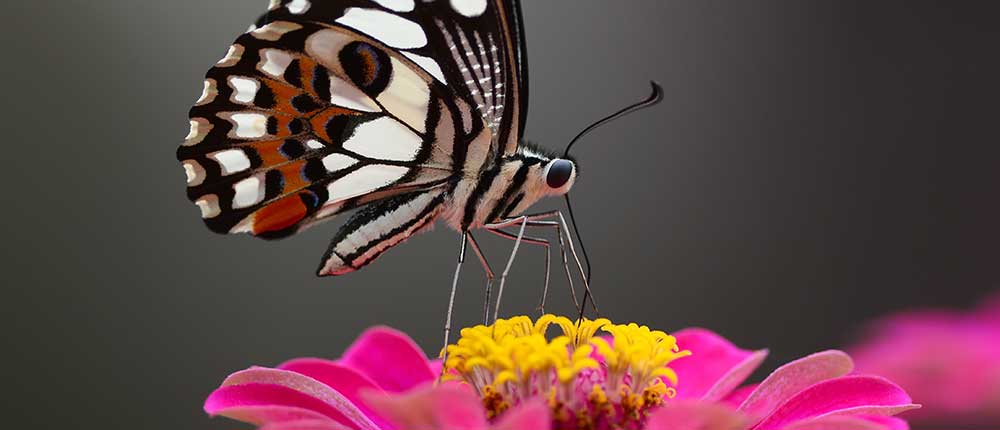
Butterflies draw our attention for countless reasons that of course include their beauty, unique life history, various adaptations in compliance with the habitat they live in, their migration, and many more such aspects. Butterflies are the creatures with two pairs of 'scaly' wings and three pairs of legs, abdomen, head with two compound eyes, and a thorax. They belong to a group of insects called 'Lepidoptera' that includes moths also with them. Lepidoptera is a Greek word that refers to 'lapis' meaning scales and 'pteron' meaning wings. These iridescent scales are arranged in a particular formation that can be compared with the tiles of a village hut and when they are touched, these scales stick to our fingers.
We need butterflies because they are the bio-indicators and can sense the slightest alteration in an ecosystem. Their richness in an ecosystem is also influenced by many environmental factors like humidity, temperature and availability of larval host plants because butterflies lay eggs only on specific plants known as larval host plants. Butterflies can be seen everywhere, basking on rocks, on ground perched on a dead animal and sucking body fluids, on rotting fruits sipping alcoholic juices or mud puddling on a wet patch of soil and sipping minerals and salts.
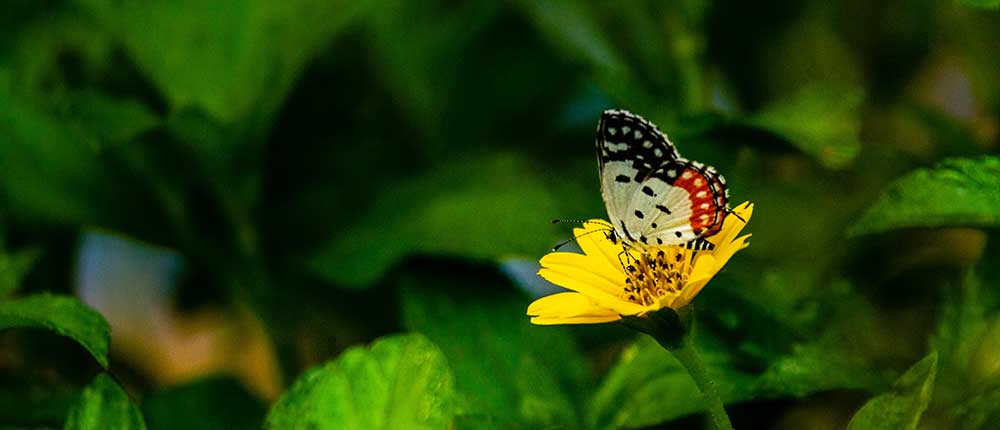
Brief History
India is one of the mega biodiversity countries where nearly 1500 species and subspecies are found of the 17,000 species worldwide, and interestingly nearly 20 per cent of them are endemic to this region, thus, making India a hotspot of butterfly diversity in the world. The largest one is the Southern Birdwing with a wingspan of 190 mm whereas the smallest one is the grass jewel with a wingspan of only 15 mm. There is another species called the Blue Pigmy butterfly, which is found in Southern California and is also amongst one of the smallest.
Butterflies have a long association with humans. If we look into ancient history, we would find the mention of butterflies in folklores, fairy tales, poetry, Mughal art, and so on, and probably that is the reason we still hear the word titli in many of our Hindi songs. Many fashion designers get inspired by their wing patterns and it is depicted in their respective works.
When we talk about the nomenclature of butterflies, we have to go back to the history of the British Era in India, in particular to their army as many of them were naturalists and had given names to Indian butterflies in the same way as the ranks in their army. To name a few—Commodore, Sailor, Sergeant, etc., and when those ranks got exhausted, they used Indian royal.
Names, such as raja, queen, nawab, emperor, and so on. They used the names of birds, animals, plants, trees, etc. Where they could not find anything matching with the butterfly, they named it something funny like 'Monkey Puzzle', a butterfly found in India. The world still follows the same nomenclature even today. Edward Donovan, an epitome of the natural history of insects in India and Indian seas, extensively worked on Indian insects. Today, butterflies have been broadly classified into two major categories, that is, Papilionidae also called true butterflies, and Hesperiidae that includes the skippers.
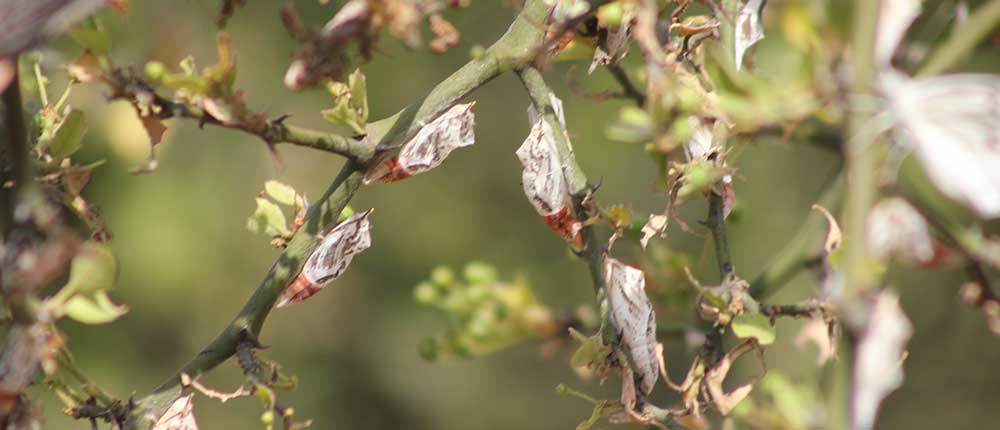
Behaviour and Life Cycle
Any living creature on the planet with small size has evolved with various defence strategies to survive and to co-exist with different predators. Charles Darwin rightly postulated the theory of survival in his famous book The origin of species that says that only those survive who are selected by nature as the fittest ones. Butterflies are quite efficient in this regard and their behaviour revolves around survival mechanism—be it ovipositional behaviour or feeding, mud-puddling to roosting, mimicry to polymorphism (multiple forms of one species) and much more. Everything is focused on self-defence which they are either born with or have eventually acquired and adapted to for their existence.
The adult butterfly is the last stage in its life cycle, which is very short and is species-specific, that could be 4–6 weeks or even 4–6 months depending on the species. Therefore, immediately after its emergence from the pupa, it has to fly and look for a mate. Also, depending upon the climatic conditions such as humidity, temperature and more, they have two seasonal forms called 'dry season form' and 'wet season form'. When an adult flies, it sprays its pheromones (ecto-hormones) to attract a mate and marks its presence in the given habitat. An adult butterfly hardly feeds as most of the feeding is done during their larval stages, but they need proteins, salts and other useful food supplements apart from the carbohydrates which they have fed upon from the host plants sources with very little salts during the larval stage. The butterfly larvae are voracious feeders and their future is decided by the host plant on which their mothers have laid eggs on. Depending upon species, the caterpillar could be mono, oligo or polyphagous in their feeding, which means the caterpillar can feed on a single host plant or a couple of others of the same genera or many other varieties as well.
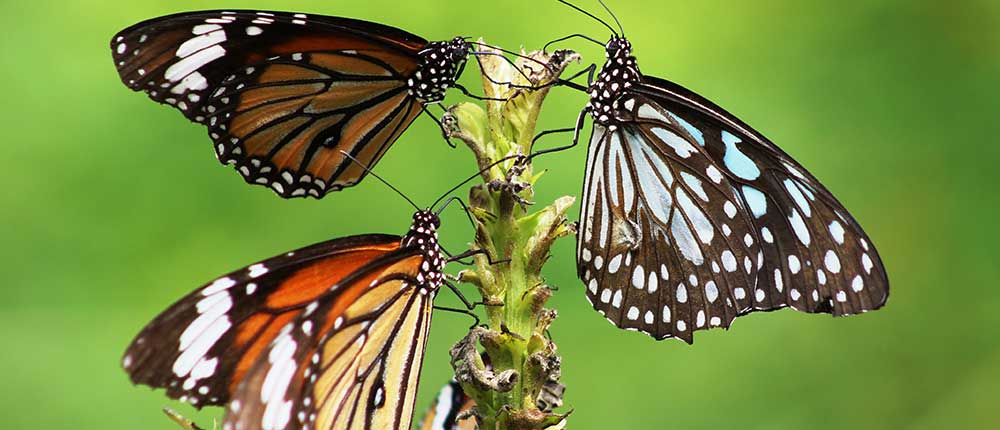
The moment a caterpillar emerges from an egg, it eats its eggshell and removes the evidence of its presence from predation. Eggs of various colours, shapes, and sizes depending upon species are laid either in ones or in clusters under the surface of leaves depending upon species. Larvae are also vulnerable to predation, hence, have evolved some very interesting self-defence strategies. For example, some caterpillars secrete sugary syrups which are consumed by ants, and in return, they protect them from other predators. This association is called commensalism. There are some species of flies that lay their eggs on the butterfly larva and their larvae feed on butterfly caterpillars; this parasitism eventually kills them prematurely. Therefore, it has evolved a defence organ called 'osmeterium' which has toxic secretions that is also species-specific and contains aliphatic acids, monoterpenes hydrocarbons, sesquiterpene compounds and esters which a caterpillar uses when threatened by everting its osmeterium and releasing toxic secretions on the predator. Eventually, the larva grows bigger after undergoing many changes and ultimately hangs itself upside down from a solid object and becomes 'J' shaped which is called 'pupa' or 'chrysalis'. Further developments take place inside the pupa. After a couple of weeks (depending upon species) the pupa shell breaks and an adult butterfly emerges out usually in the mornings. It sits on the pupa case and dries its wings in the sunlight. 'Haemolymph' (butterfly blood) flows into the veins of wings and they stretch after some time that enables an adult to fly and mate again. This entire process of transformation from an egg to an adult is called metamorphosis. Mating is not that simple as it seems to be. Males have to search and find females. During these search operations, males have to feed and accumulate various salts, minerals and other food supplements to prove their superiority to other males in front of the females.
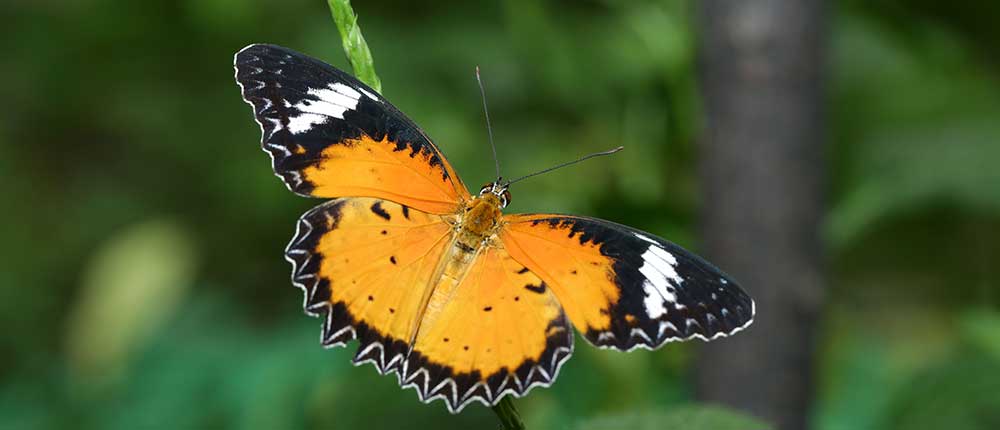
Butterflies feed mainly on carbohydrates which they get from their respective plant sources during their larval stages and to get other nutrients, minerals and salts, they have to do a lot of mud puddling on the wet soil and sip various alkaloids and other nutrients from many different plants and other sources like rotten fruits as well as dead animals. All these nutrients generally are obtained and stored by males and presented to their female counterparts while mating as 'nuptial gifts' because females do not possess them but need them for healthy offspring.
Males, while patrolling, spray their male pheromones and watch females. Sometimes, they perch on a higher branch of a tree in their territory. On seeing the females, they chase them and start flying together for few minutes to hours before settling down and mate. Mating is not solemnized without the consent of the female. Isn't it worth learning from these tiny creatures that consensus and harmony is of utmost importance in human relationships also?
Whatever activities like mud puddling, roosting, migration, etc., a butterfly does, it prefers to do it in a bigger group so as to protect itself from predation even if few individuals have to be sacrificed during the attack in a big group—again an evolutionary survival strategy. Many species of butterflies in India migrate from the plains to the Western Ghats during the North-East monsoon and from the Western Ghats back to the plains during the South-West monsoon to breed and to avoid extremely harsh weather conditions. Interestingly, migration is triggered and planned by a butterfly while inside the pupa as they can sense favourable or adverse environmental conditions in this stage.
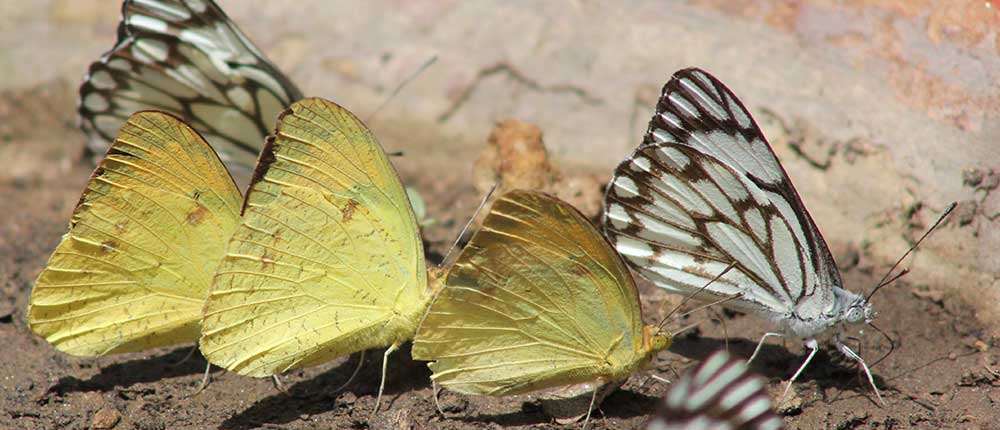
Their migration is not like bird migration because their next generation performs the return migration journey because of their short life span. In self-defence, the butterflies also exhibit two types of mimicries, one is Mullerian and the other one is Batesian in which palatable species mimics warning signals of non-palatable one to protect itself from predation. Mimicry is observed broadly amongst the females because they have to propagate the next generation and hence need more protection. Mostly beautifully coloured butterflies have a lot of toxic compounds deposited on their wings or in other body parts to keep the predators away from them and predators also learn the hard lesson only after eating them.
Threats and Conservation
Like other animals, butterflies have many natural predators such as insects, birds, spiders and lizards but the most dangerous one is the man. There are many species of butterflies which are smuggled to China, Taiwan and many other international markets of various countries from India. They are also killed and framed for decoration and other ornamental value. This reminds me of the famous documentary film directed by Sonya V Kapoor and produced by the British Council in 2006 titled Once there was a purple butterfly. The film depicts illegal trade—how these beautiful insects are captured and transported alive or dead to the international markets of other countries in the world. In many countries, they are released in large numbers during wedding ceremonies at night when they can't fly and die.
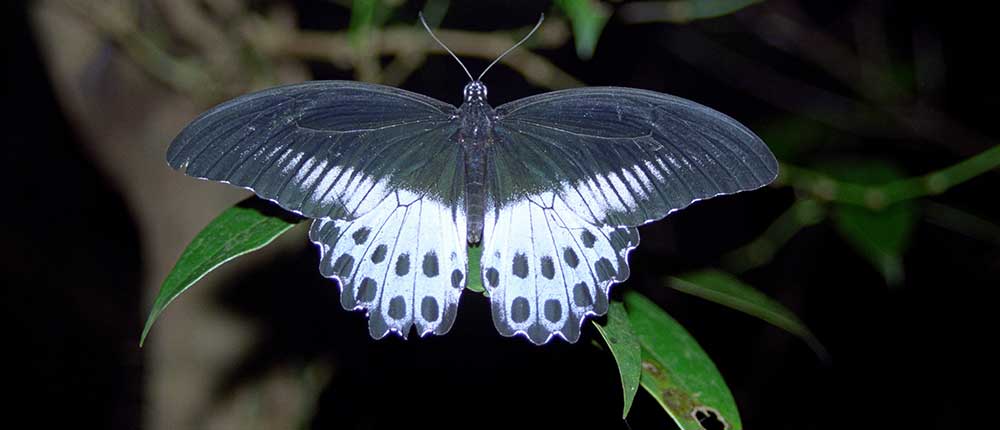
The use of pesticides in India is another serious threat to butterfly conservation as they lay eggs only on our native species of plants. As I have pointed out that their life is very short and on the top of that, out of every hundred eggs laid only one or two reach maturity and that makes them more vulnerable. In our country, very less studies have been done on butterflies but there is hope because at the Indian Institute of Science, Bengaluru, where a group of scientists has started compiling and re-documenting them in a scientific manner with the help of citizen scientist programmes and has developed a web page 'ifoundbutterflies.org' where amateur nature enthusiasts can upload their photos from all over the country helping them to generate data. Till date, they have uploaded around 1400 species of butterflies from India. Also, our honourable Prime Minister, Shri Narendra Modi, recently inaugurated a butterfly park in Gujarat which will also motivate many other states. The writer himself is involved in the conservation of these tiny creatures and is spreading awareness about butterflies in Delhi-NCR individually and in collaboration with WWF-India, BNHS, IIC, JNU and more, and has published posters, pocket booklets and a calendar on butterflies to inculcate awareness among the youth and the common people. Let us come together and join hands to conserve these magnificent creatures called butterflies.

(Dr Surya Prakash, Member—BNHS, IBCN, WWF, School of Life Sciences, Jawaharlal Nehru University, New Delhi, India.)

